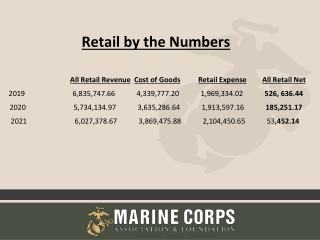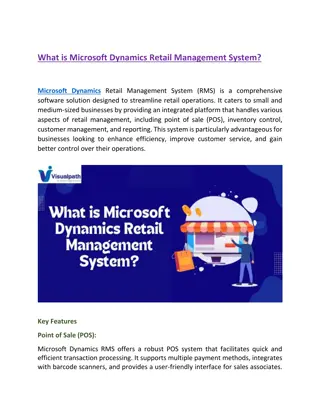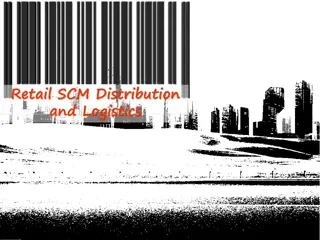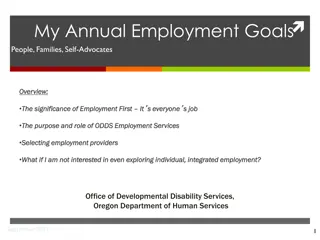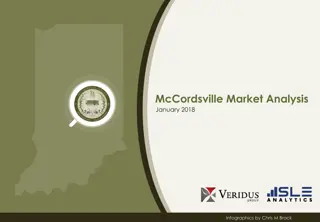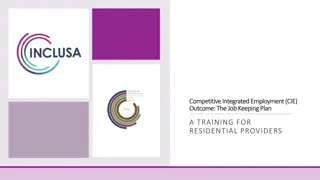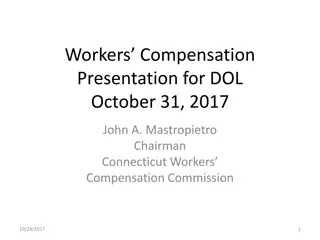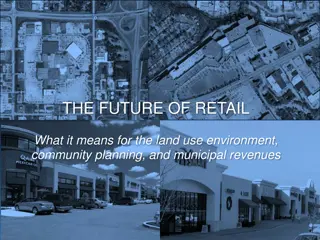Retail Employment in U.S. & Connecticut: Insights & Trends
Explore the retail employment landscape in the U.S. and Connecticut, including top occupations, wage estimates, access to benefits, demographics of the national retail workforce, and composition by race and ethnicity. Gain valuable insights for the Connecticut Low Wage Employer Advisory Board.
Uploaded on Mar 20, 2025 | 0 Views
Download Presentation

Please find below an Image/Link to download the presentation.
The content on the website is provided AS IS for your information and personal use only. It may not be sold, licensed, or shared on other websites without obtaining consent from the author.If you encounter any issues during the download, it is possible that the publisher has removed the file from their server.
You are allowed to download the files provided on this website for personal or commercial use, subject to the condition that they are used lawfully. All files are the property of their respective owners.
The content on the website is provided AS IS for your information and personal use only. It may not be sold, licensed, or shared on other websites without obtaining consent from the author.
E N D
Presentation Transcript
Retail Employment in the U.S. and Connecticut A presentation to the Connecticut Low Wage Employer Advisory Board
Connecticut occupations with the largest employment, 2014 1. Retail Salespersons 54,210 workers 2. Cashiers 38,800 workers 3. Registered Nurses 33,780 workers 4. Secretaries and Administrative Assistants 31,990 workers 5. General and Operations Managers 31,660 workers 6. Office Clerks, General 30,350 workers 7. Food Preparation and Serving Workers 29,290 workers 8. Janitors and Cleaners 29,190 workers 9. Customer Service Representatives 28,350 workers 10. Waiters and Waitresses 26,330 workers Source: Bureau of Labor Statistics, May 2014 State Occupational Employment and Wage Estimates
Occupational Employment and Wage Estimates, Connecticut Median hourly wage Mean annual wage All occupations $20.67 $55,060 Retail Salesperson $10.91 $27,230 Cashier $9.75 $22,400 Source: Bureau of Labor Statistics, May 2014 State Occupational Employment and Wage Estimates
Access to Benefits: National Data on Sales and Related Occupations Employer-Provided Health Benefits 59% access 49% participation 69% take-up rates Employer-Provided Retirement Benefits 68% access 38% participation 57% take-up rates Access to Paid Leave 52% paid sick time 67% paid holidays 8% paid family leave Source: Bureau of Labor Statistics, 2013 and 2015 Current Population Survey March Supplement
Demographics of the National Retail Workforce Retail Worker Demographics Ages 20 and over Has own children in household (includes biological, step-, and adopted) 95.5% 36.1% Sole earner in the household 18.2% Contributes at least 50% of household income 53.9% Part time work 27.5% Involuntary part time work (as percentage of all workers) Involuntary part time work (as percentage of part time workers) 12.7% 32.5% Low Wage (below $12.25 threshold) 46.6% In or near poverty (up to 150% of poverty threshold) 15.5% Includes those workers over age 16, employed in retail at least 26 weeks, 4 hours a week in the last year. Source: Bureau of Labor Statistics, 2012 Current Population Survey March Supplement
Composition of the National Retail Workforce by Race and Ethnicity
Share of Retail Workers Employed Part-Time by Race and Ethnicity White, non- Hispanic Black, non- Hispanic Latino (any race) Asian, non- Hispanic All Part time workers Percentage of part-time workers who are involuntary 32% 32% 35% 31% 30% 33% 29% 45% 42% 29% Source: Demos analysis of 2012-2014 CPS Annual Social and Economic Supplement
Retail Worker Poverty Rates Before and After a Raise to $15 an Hour
Retail Worker Poverty Rates Before and After Reducing Involuntary Part- Time Work



